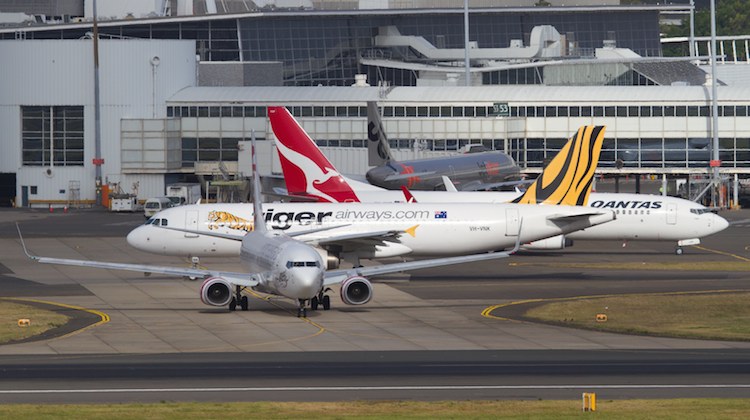
Australian domestic economy airfares edged marginally higher in June while business class tickets were a touch lower, new figures show.
The Bureau of Infrastructure, Transport and Regional Economics (BITRE) measure of domestic business class airfares was at 95.1 index points in June, down marginally from 95.3 points a year earlier.
Meanwhile, the restricted economy index was at 80.9 points, up from 79.6 points in June 2016.
And the best discount economy index rose to 61.5 points, compared with 58.5 points in the prior corresponding period.
The BITRE air fare series is a price index of the lowest available fare in each fare class, weighted over selected routes.
Both Australia’s major carriers Virgin and Qantas have cut domestic capacity in recent times in an effort to improve yields and better match the number of seats in the market with demand.
Indeed, recent figures from the International Air Transport Association (IATA) said demand in the Australian domestic market had gone backwards in the year to April 2017, with revenue passenger kilometres (RPK) down 0.6 per cent and capacity measured by available seat kilometres (ASK) falling 1.1 per cent, compared with the prior corresponding period.
Australia was the only domestic market to go backwards in terms of RPKs in April. With capacity being cut more than demand, load factors were up 0.4 percentage points to 75.9 per cent.
“Once you adjust for the extra day in early 2016 owing to the leap year, domestic Australia RPKs have barely grown in year-on-year terms in 2017,” IATA said in its April air passenger market analysis report.
“Capacity has trended sideways in SA (seasonally adjusted) terms over the past three years, however, which has helped to support the passenger load factor.”
Qantas chief executive Alan Joyce told reporters at the recently concluded IATA annual general meeting in Cancun, Mexico the local market was a “tale of two cities nearly”, with weaker demand in mining states such as Western Australia and Queensland and strong growth along the east coast.
This was reflected in Qantas’s revenue per available seat kilometre (RASK) metric so far in the 2016/17 financial year. Joyce said RASK fell in the first quarter, was neutral in the second quarter and rose in the three months to March 31 2017.
“And we are seeing that trend continue so as far as we are concerned the domestic market is pretty healthy, we are very happy with the performance of that and we see that trend continuing into the next financial year,” Joyce said.
Meanwhile, Jetstar group chief executive Jayne Hrdlicka said it was a similar experience at the Qantas-owned low cost carrier’s Australian operations.
“We are seeing continued momentum in people wanting to travel to really interesting places in Australia to have fun,” Hrdlicka said.
“We are also increasingly carrying lots of small businesses who are able to cross geographic boundaries now because it is affordable to do that. So the domestic market we see as being really stable and underlying health.”
Virgin Australia group executive for airlines John Thomas said although mining was still a subdued market, he shared the Reserve Bank of Australia’s (RBA) view that things would get better from this point.
“The Reserve Bank believes WA and Queensland – because it is not just WA it is Queensland as well – have sort of hit the bottom and I think the expectation is they will rise again,” Thomas told Australian Aviation at the IATA AGM.
More broadly, IATA said consumers were expected to experience “substantial increase in the value they derive from air transport in 2017, including a further reduction in what they pay, after allowing for inflation”.
“Falling travel costs have been adding several percentage points to RPK growth over the past several years. The average return fare (before surcharges and tax) of $353 in 2017 is forecast to be 64 per cent lower than in 1996, after adjusting for inflation.”










